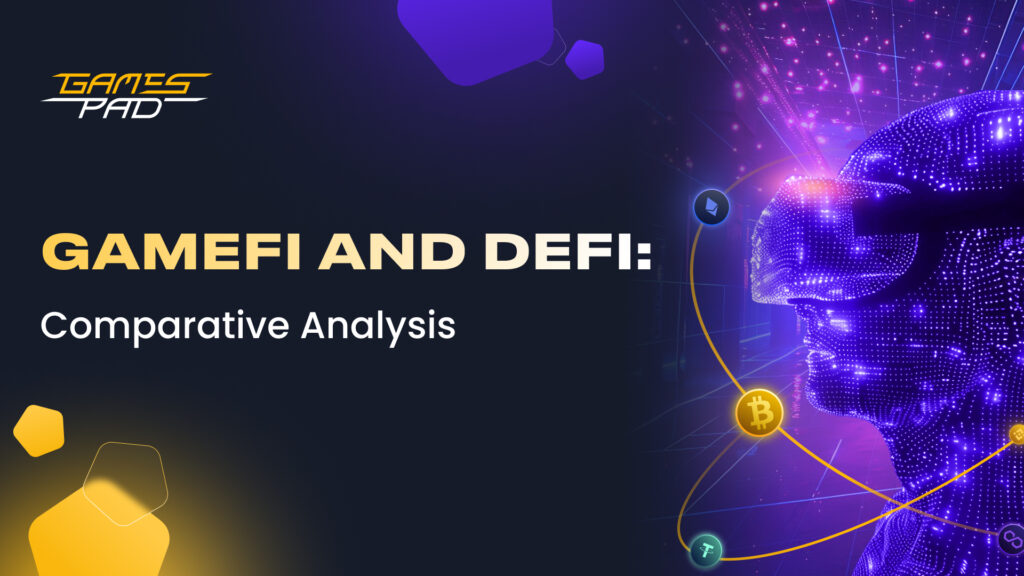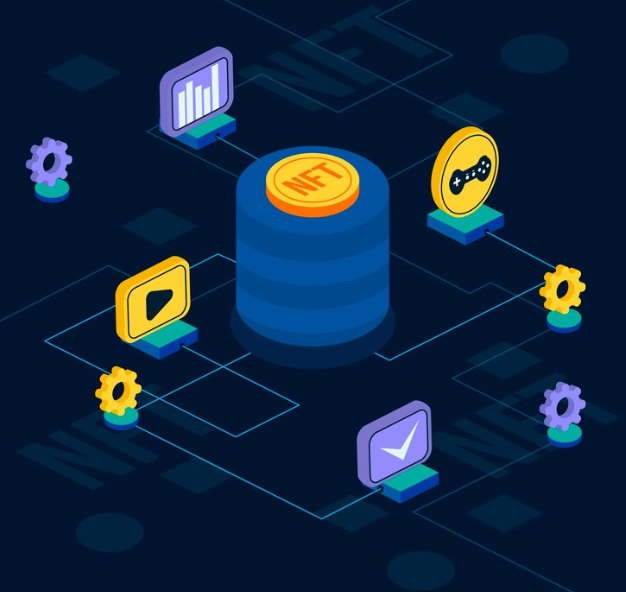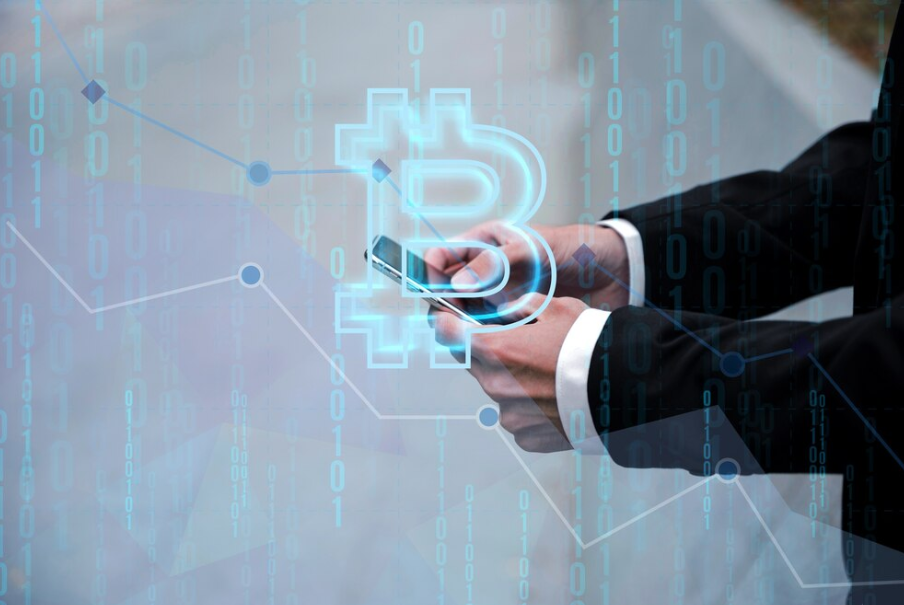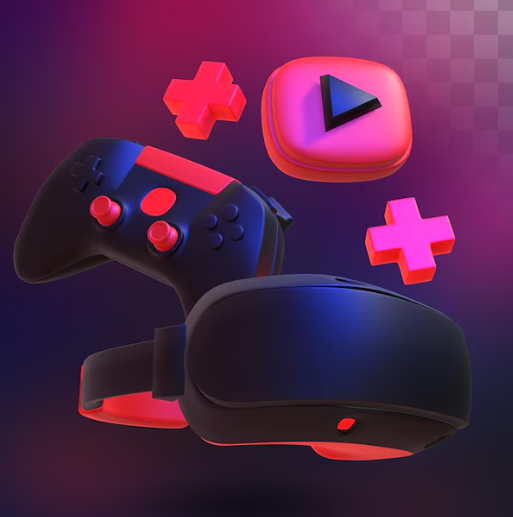
In the dynamic world of cryptocurrency, two terms are creating quite a stir: GameFi and DeFi. But what exactly distinguishes them? Let’s dive deep and uncover the secrets behind these trending concepts.
Furthermore, we’ll explore strategies for integrating these trends into your crypto portfolio management, equipping you to make well-informed decisions in the ever-changing realm of digital assets. So, fasten your seatbelts as we embark on this enlightening journey into the worlds of GameFi and DeFi.
For investors navigating the crypto landscape, grasping the differences between GameFi vs. DeFi is essential. It’s a key step for diversifying portfolios and optimizing crypto tracking and management. In this piece, we’ll explore the core disparities between GameFi vs. DeFi, shedding light on their unique characteristics, applications, and potential impacts on the crypto market.

GameFi, derived from “Game Finance,” represents a thriving sector in the cryptocurrency realm that blends gaming elements with decentralized finance (DeFi) principles. Within a GameFi game, players have the chance to earn in-game tokens through various play-to-earn in game activities like completing quests, engaging in game battles, acquiring virtual assets, and earning and selling in-game items. These in-game items and tokens often carry tangible value and can be traded or utilized within the game ecosystem.
Popular GameFi platforms aim to stimulate user engagement, cultivate community-based economies within a game, and open up new revenue streams for gamers through a play-to-earn model. By infusing financial activities with gamification and integrating blockchain technology, GameFi presents innovative avenues for players to interact with game assets, offering both earning and investment opportunities in the game ecosystem.

DeFi, shorthand for “Decentralized Finance,” encompasses a wide range of financial services and applications built on blockchain technology, predominantly Ethereum. Unlike conventional finance, DeFi operates sans intermediaries in the form of a central authority such as banks or brokerages, leveraging smart contracts to automate transactions and uphold agreements as well as power economic interactions within a game ecosystem – all is done through a smart contract system.
DeFi spans diverse use cases, including lending, borrowing, trading, and asset management, all conducted in a permissionless and transparent manner and managed by smart contracts within a single game or a system of games.
Participants in DeFi enjoy global access to financial services through decentralized exchanges, retain control over their assets via private keys, and can earn yields through activities like liquidity provision or staking. This applies also to any blockchain-based game that relies on a play-to-earn model.
DeFi represents a fundamental shift in finance, offering enhanced accessibility, inclusivity, and innovation, with the potential to transform the global financial landscape.

The main GameFi features are the following.
GameFi introduces fresh gameplay mechanics based on a play-to-earn model that incentivizes player engagement and rewards participation in popular GameFi platforms through play-to-earn models.

Non-fungible tokens (NFTs) are pivotal for any gaming ecosystem. Non-fungible tokens enable secure ownership, trading, and monetization of in-game assets like characters, weapons, virtual real estate, or other rare items such as digital art within a gaming ecosystem.
Play-to-earn P2E games such as SocialFi platforms often incorporate community governance, allowing players to partake in decision-making processes concerning game development, updates, and economic policies in a GameFi economy.
Many games that apply a play-to-earn mechanism seamlessly integrate game assets with decentralized finance (DeFi) services such as liquidity provision and yield farming, expanding asset utility and liquidity to other players, those who are not normally involved in traditional gaming.
Play-to-earn games such as Gods Unchained are designed for compatibility across various platforms, including web browsers, mobile devices, and gaming consoles, enhancing user adoption and engagement thus laying a solid foundation for community building.

GameFi games prioritize economic sustainability through balanced tokenomics within one game, reward structures, incentivizing long-term player participation, and ecosystem growth.

Decentralized Finance relies on the following features.
DeFi operates on decentralized networks, facilitating direct transactions between users through smart contracts, ensuring transparency and security for those playing games and investing in them.

DeFi platforms are accessible to anyone with an internet connection and compatible digital wallet, promoting global participation without traditional banking infrastructure.
DeFi fosters permissionless innovation, enabling developers to create and deploy financial applications without centralized approval, fostering rapid experimentation.
DeFi projects are designed to be interoperable, facilitating seamless integration and interaction between different decentralized applications (DApps), financial services, and blockchain-based games.
DeFi leverages blockchain technology to provide transparent and immutable records of transactions and asset ownership, enhancing trust and confidence in blockchain networks.
DeFi aims to democratize access to financial services by providing alternatives to traditional banking systems and promoting financial inclusion and empowerment on a global scale.

GameFi, while sharing similarities with DeFi, distinguishes itself by embedding financial activities within gaming environments. It encompasses all games with a play-to-earn P2E ecosystem, often intertwined with blockchain and crypto, although its roots extend beyond.
The advent of crypto and NFTs has transformed GameFi, granting players true ownership and facilitating secure trading of in-game assets, including fungible tokens and NFTs. Axie Infinity exemplifies this evolution, demonstrating the enduring appeal of play-to-earn games. In essence, GameFi merges gaming with finance, as its name suggests, and this is its main difference from traditional video games.
In the emerging landscape of the metaverse, where virtual worlds are built on blockchain technology like Decentraland and The Sandbox. These two realms, GameFi video games, as well as DeFi, could intertwine seamlessly, offering a new digital frontier for blockchain gaming, socializing, and commerce.
In the metaverse, GameFi projects with DeFi could collaborate to create vibrant virtual economies. Games within the metaverse could feature integrated play-to-earn mechanisms. People engage and earn rewards in the form of utility and governance tokens or NFTs through blockchain gaming. Meanwhile, DeFi platforms could underpin these economies, providing players access to a range of financial services.
While the metaverse is still in its infancy, the potential for GameFi games with DeFi to shape its development is vast. These technologies have the capacity to enhance the immersive experience of the metaverse, making it more accessible and rewarding for users.
As these both technologies converge, we’re witnessing a symbiotic relationship between the two. Games are increasingly integrating DeFi to power their economies, offering players opportunities to earn rewards that have real-world value and can be utilized in various DeFi activities like lending and trading.
Conversely, DeFi projects are incorporating gamification elements to attract other players, enhance accessibility, and foster engagement. This convergence not only enriches the user experience but also expands the utility of both GameFi games and DeFi offerings.
When comparing the popularity of two things, money and users often take center stage.
DeFi, by its definition, aims to disrupt traditional banking and financial intermediaries, suggesting it could dominate. However, the reality is more nuanced. Despite the bullish outlook on cryptocurrencies, a complete takeover by DeFi isn’t imminent. This brings us to the challenge of assessing the capital each industry could realistically amass. Complicating matters is the blurry line between the GameFi sector and DeFi.
Consider The Sandbox, a fully decentralized platform where users can buy land, lease it, and showcase NFTs. If one were to buy land through a decentralized platform and lease it to host events, is this DeFi or GameFi? It’s a gray area, illustrating the difficulty in categorizing activities solely based on their virtual environment. Nevertheless, as long as there’s potential for profit, the distinction may be moot. The lack of a clear demarcation complicates direct comparisons between the two sectors.
Another challenge lies in measurement metrics. DeFi typically uses Total Value Locked (TVL) to gauge popularity, while GameFi often looks at transaction volume. However, comparing these metrics isn’t straightforward. DeFi’s TVL surpasses GameFi’s transaction volume, but the nature of the services differs.
While it’s common for large sums to be locked in DeFi protocols for interest generation and financial gain, investing millions in game assets or making in-game purchases for millions is less common.
However, NFT sales, integral to GameFi, are often excluded from game companies’ transaction volume calculations. NFTs, particularly game-related ones, have witnessed significant growth. Platforms like Gala Games consistently register substantial sales. Considering NFT transactions alongside GameFi could yield a more balanced comparison.
Looking ahead, while DeFi dominates currently, GameFi’s potential is promising. Traditional banks’ annual revenue, estimated at $2.3 trillion, may seem insurmountable for some games, but if DeFi were to challenge traditional banking, it’s plausible for GameFi to thrive. Reports forecasting the metaverse sector’s revenue reaching up to $1 trillion underscore GameFi’s growth potential. While GameFi has ground to cover to match DeFi’s financial prowess, it’s certainly not out of reach.
When it comes to users and popularity, GameFi takes the lead, marking a significant departure from the financial dominance of DeFi.
According to Bloomberg, GameFi has already surpassed DeFi in user activity, a trend corroborated by Dappradar’s recent report. Games now command 52.4% of all dapp user activity, compared to DeFi’s 34.7%.
Remarkably, while DeFi activity has waned amidst market fluctuations, game activity continues to surge, unaffected by crypto and equity price plunges. This resilience underscores GameFi’s accessibility and appeal to average players seeking enhanced gameplay through ownership and play-to-earn opportunities.
GameFi boasts more users than DeFi in the past week, particularly if PancakeSwap is excluded. Though DeFi edges ahead in the last 30 days, largely due to PancakeSwap’s activity, GameFi’s popularity remains evident.
Looking at specific games, Axie Infinity alone demonstrates GameFi’s massive potential. With over one million unique wallet addresses interacting with its Ethereum sidechain in a single day, Axie Infinity exemplifies GameFi’s popularity and reach.
Comparing user accessibility, DeFi’s utility primarily appeals to those seeking additional income through capital leveraging, limiting its user base. In contrast, GameFi’s inclusivity is evident, with options available to anyone interested in gaming. Though some games may require initial investments in NFTs, solutions like scholarships are emerging to lower entry barriers. With over 3.2 billion gamers worldwide, GameFi’s potential user base is immense, underscoring its broad appeal and growth prospects.
When comparing the development and product availability between GameFi vs DeFi and their traditional counterparts, it’s evident that the gaming industry outpaces the financial sector in creativity and product diversity. Unlike the stringent regulations governing financial products, game development allows for unrestrained creativity, resulting in a plethora of games catering to various tastes and preferences. The exponential growth of the gaming industry, both in terms of graphics and gameplay, underscores its dynamic nature and broad appeal.
Jason Brinks, representing Gala Games, highlighted the gaming industry’s creativity and growth potential, emphasizing its capacity to drive philanthropy and social impact. Axie Infinity serves as a prime example, providing income opportunities to individuals affected by the pandemic in the Philippines.
Statistics further support the rapid growth of GameFi and blockchain games. The proliferation of DeFi dapps is noteworthy, with over 400 active blockchain games and nearly 1200 games in total, signaling a 91% year-over-year growth. Moreover, blockchain games attracted $4 billion in venture capital investments last year, indicating significant interest and potential for further development.
The delineation between GameFi vs DeFi, often blurred, is inconsequential given their shared potential to leverage blockchain technology. Combining gaming with DeFi features presents endless possibilities, allowing users to stake in-game currencies for rewards, purchase NFTs, borrow against assets, or lend rare NFTs. This convergence has the potential to revolutionize crypto adoption, drawing in masses with gaming familiarity and enticing them with integrated DeFi features.
Despite concerns about traditional game developers’ resistance to NFTs and crypto, the allure of ownership and play-to-earn opportunities resonates with gamers. The massive capital inflow into GameFi-focused companies further underscores the industry’s potential for growth and innovation. With major exchanges and venture funds earmarking substantial investments for GameFi projects, the sector’s trajectory appears promising.
Ultimately, the future of GameFi holds immense potential, evident in its surpassing of DeFi in user engagement. While its dominance in monetary terms remains uncertain, the industry’s trajectory suggests significant growth opportunities. As investors and developers alike flock to GameFi, propelled by its innovative potential and growing user base, the landscape of gaming and finance stands poised for transformation.
In conclusion, the comparative analysis between GameFi vs DeFi reveals a fascinating interplay between two distinct yet interconnected realms within the cryptocurrency space. While GameFi represents the fusion of gaming and finance, offering novel opportunities for player engagement and economic participation, DeFi epitomizes decentralized financial services, revolutionizing traditional finance through blockchain technology.
Key disparities between GameFi vs DeFi encompass their core features, user engagement, market potential, and development landscape. GameFi introduces innovative gameplay mechanics, NFT integration, and community-driven governance, fostering vibrant virtual economies within gaming environments. In contrast, DeFi prioritizes decentralization, open access, and interoperability, enabling global access to financial services and fostering permissionless innovation.
The convergence of GameFi vs DeFi presents synergistic opportunities for both sectors, enriching user experiences and expanding utility. As GameFi platforms integrate DeFi protocols and gamification elements, they unlock new avenues for player engagement and financial participation. Conversely, DeFi projects incorporating gaming features attract broader user demographics, driving adoption and innovation in decentralized finance.
While DeFi currently leads in monetary metrics, GameFi demonstrates superior user engagement and popularity, reflecting its broader appeal and accessibility. GameFi’s inclusivity, exemplified by its appeal to the vast gaming community, positions it as a significant driver of crypto adoption and innovation in the coming years.
Looking ahead, the future of GameFi holds immense promise, fueled by growing investor interest, technological advancements, and evolving user preferences. Despite challenges and uncertainties, GameFi’s trajectory suggests significant growth potential, with the potential to rival DeFi in monetary terms and reshape the landscape of gaming and finance.
In summary, both GameFi as well as DeFi represent distinct yet complementary facets of the cryptocurrency ecosystem, each contributing to the ongoing evolution of digital assets and decentralized systems. As these sectors continue to converge and innovate, they hold the power to revolutionize how individuals interact with digital assets, financial services, and virtual ecosystems in the years to come.
Disclaimer: The information provided in this outline is based on data available up to May 10, 2024. Due to the rapidly evolving nature of the blockchain and cryptocurrency space, it is recommended to verify the latest information and trends through additional research.